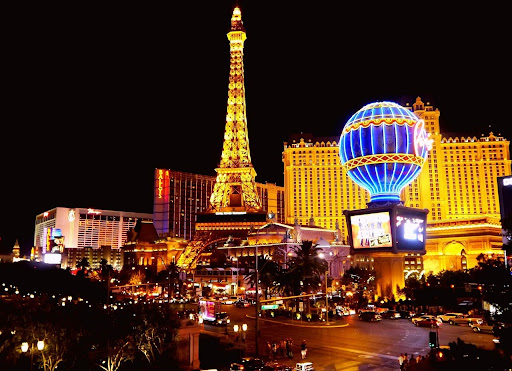Michael Gering works at Pharmaca, next to Vicente Foods in Brentwood.
For 30 years now, he has had an obsession.
He has studied just about every book, every video, every photo, every newspaper article and every magazine interview that pertains to the assassination of President John F. Kennedy on November 22, 1963. Gering was just 4 years old when the tragedy occurred.
And for 15 of these last 30 years, Gering has been writing a book that combines a fictional character in Cuba (“The Beachcomber”), a non-fictional blow-by-blow description of the failed Bay of Pigs invasion and an in-depth investigation and recitation of all the evidence – and theories – regarding the slaying of our 35th president.

Last month – November – marked the 53rd anniversary of JFK’s assassination. On November 25, Castro died. And now you can read all about it in The Beachcomber and try and connect the dots.
The years have made memories murky, especially as more and more who might have known anything about the events of the late fifties and early sixties have passed on – possibly killed, even, because of what they knew.
And it’s likely many people find the whole topic of JFK’s assassination so upsetting that, to this day, they just can’t deal with it. Plus it’s all very complicated – many people, many theories, many secrets.
But Gering drills deep. And then he drills some more. And then he keeps on drilling – without Novocaine. Reading Beachcomber will be very painful for anyone who was alive and basically aware on November 22, 1963. I was 12 at the time; the memories of the assassination still make me cry to this day.
While many of us have kept our eyes shielded from all this – it’s just too painful – Gering shows, page after page after page, how mysteriously intertwined all this was.
Castro was mad at Kennedy for failed assassination attempts, the Bay of Pigs Invasion and the economic embargo imposed by the U.S.
The Russians, friends of Castro, were mad about how the Cuban Missile Crisis unfolded (their missiles were removed as part of the deal).
Many Cubans, exiled at this time to Florida, were mad at Kennedy for pulling the plug on the air support that might have allowed the invasion to succeed. These Cubans wanted to get back in and pick up where they left off before Castro ousted Batista in 1959.
Many of these Cubans had big economic interests, including ownership of many nightclubs and gambling establishments that attracted mafia money. Havana was a very happening place in those days, pre-Castro.
Adding fuel to the fire, Bobby Kennedy turned up the investigative heat on organized crime while serving as JFK’s attorney general. But this came on the heels of the 1960 election, which some thought was stolen with the help of the mafia in Illinois. So, if true, the mafia was mad for other reasons in addition to lost income from Cuba.
Adding to the murkiness was the fact JFK and one Mafia leader shared a girlfriend. But it doesn’t stop there.
Nixon was mad at Kennedy because of how the 1960 election turned out. LBJ was reportedly upset because there were rumors floating around that Kennedy would dump him from the ticket in 1964 – an idea publicly floated by Richard Nixon.
But the CIA was perhaps maddest of all at Kennedy, according to Gering, because, in the aftermath of the Bay of Pigs failure – which Kennedy attributed to bad intelligence coming from the CIA – the Kennedy brothers pretty much dismantled the CIA power structure, post-invasion. Several top CIA officials were fired or moved into lesser jobs.
Even young George H.W. Bush is part of the story: George H.W. Bush, as you might recall, was in charge of the National Republican Committee at the time of Nixon’s Watergate scandal (and later head of the CIA). But long before this, George H.W. Bush’s father, Prescott Bush, a senator from Connecticut, was an early financial backer of Nixon. The Nixon/Bush ties run deep, according to Gering.
Gering says Nixon was tasked with the planning of the Bay of Pigs invasion while serving as vice president to President Dwight Eisenhower. The actual invasion didn’t take place until Kennedy took office in 1961. The Bay of Pigs plan was inherited by Kennedy from the previous administration. But Nixon was still there to carry it out.
When Kennedy decided to go ahead with the invasion and then changed his mind – withdrawing air support and then later blaming the whole fiasco on the CIA – the CIA and Nixon couldn’t take it anymore, according to Gering. It was time for revenge.
But how could all of these angry people – and there were many more, according to Gering – co-conspire and successfully pull off an act as bold as killing the president? Gering doesn’t really know, he says. But he believes it to be true.
Lee Harvey Oswald, according to Gering, was just a patsy in all this – set up by the real assassins to take the fall once Kennedy was killed.
According to Gering, there were several shooters in Dallas that day, including some stationed several floors above Harvey, in the book depository. There were several teams of shooters operating independently; if one team failed, another might succeed.
And why was Jack Ruby so motivated to kill Oswald? Surely he was no broken-hearted patriot.
Gering does an eye-opening job of linking all this together – including naming names of operatives who were all: 1) physically present during the Cuban operation; 2) in Dallas on the day of the assassination; and 3) directly involved with the Watergate break-in, in 1972.
That’s a lot of coincidences.
Again, it has been many years now, but Richard Nixon, as we recall, had many Cuban friends, from high-up financiers like Bebe Rebozo to cloak-and-dagger operatives like Virgilio Gonzales and Eugenio Martinez (Watergate burglars, along with James McCord, Frank Sturgis and Bernard Barker – all former CIA and FBI).
Other familiar names come into play in the pages of Beachcomber: E. Howard Hunt and Gordon Liddy. Gering believes the infamous 18-minute gap in the Nixon tapes wasn’t about Watergate – but rather about the Kennedy assassination. That was the biggest bombshell of all that simply had to remain covered up no matter what.
It’s almost hard to believe all this darkness could take place right here in America, but we are chastened now; we know more than we did in an earlier, more innocent time. Cuba, Vietnam, Iraq and Afghanistan – it’s all about the money, according to Gering.
Top officials in the intelligence community, the armed forces and of course big defense contractors all benefit whenever a war breaks out. Gering believes these forces actually help bring about these wars via disinformation (Gulf of Tonkin; weapons of mass destruction in Iraq; etc.) planted by the people who would benefit financially yet from another war.
This is perhaps the biggest takeaway from Beachcomber, according to Gering: It’s time to put an end to the cycle that destroys lives and wipes out our treasury.
So back to Beachcomber, the main character of the fictional part of the book. He’s a bit of a lonely character, hanging out, homeless, on a beach in Cuba. He rescues people from drowning; he has a difficult family life; he does his best to make his little corner of the world a better place.
It’s hard not to think of Michael Gering as the Beachcomber. He has spent countless hours putting together the evidence and the theories.
When his spirits flagged, he was encouraged by people like the late comedian George Carlin and TV producer David Milch (NYPD Blue, Hill Street Blues, HBO’s “Luck”).
Gering admits “you would have to be crazy to try to unravel the JFK cold case,” but Gering contends he’s “really on to something.”
Gering hopes one day someone really figures all this out in a definitive way. Maybe it will happen, and maybe it won’t. But at least, like The Beachcomber, he tried.
Maybe there’s a movie in all this. To learn more about the book, go to:
www.MichaelGering.weebly.com.




















